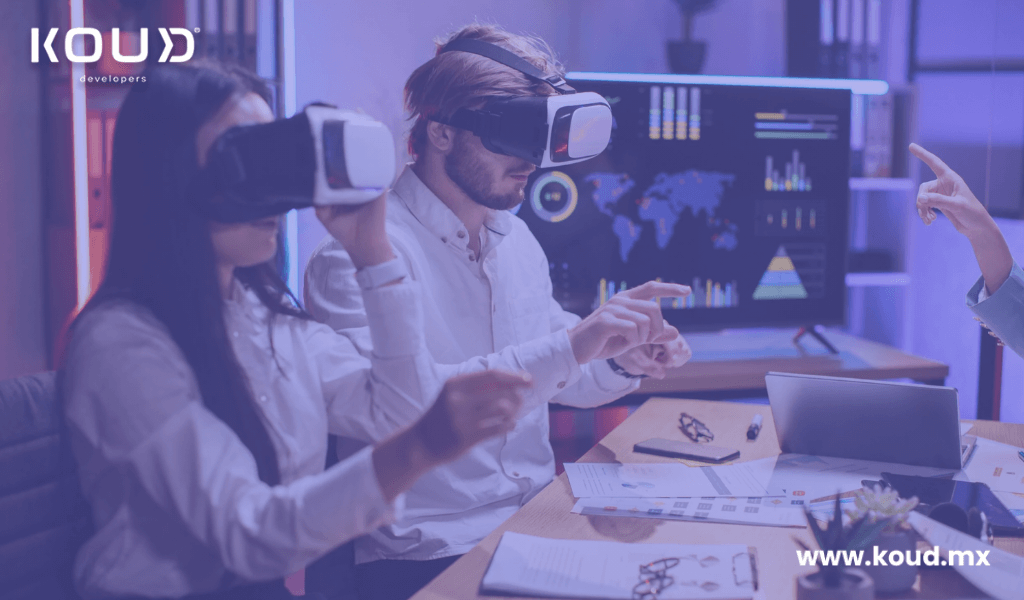What Is Augmented Reality and How Can It Be Applied in Business?
Augmented reality (AR) is revolutionizing the way we interact with the digital world. While it’s often associated with video games or entertainment, this technology holds immense potential to transform the business landscape. In this article, we’ll explore what augmented reality is, how it works, and—most importantly—how it can be applied in business to enhance customer experiences, streamline operations, and unlock new opportunities.
What Is Augmented Reality?
Augmented reality is a technology that overlays digital elements (images, sounds, text) onto the physical world in real time. Unlike virtual reality, which creates an entirely digital environment, AR blends the real world with virtual components to offer a rich, interactive experience. It can be accessed through smartphones, tablets, smart glasses, or even projectors.
For example, when you use an app to visualize how a piece of furniture would look in your home before buying it, you’re using augmented reality. This technology’s strength lies in its ability to merge the physical and digital worlds, delivering an immersive and dynamic experience.
How Does Augmented Reality Work?
AR operates through the integration of sensors, cameras, screens, and specialized software that detect and analyze the physical environment. AR devices use complex algorithms to recognize surfaces, objects, or even people and then overlay computer-generated visuals in the appropriate locations.
In mobile applications, for instance, a phone’s camera captures the real-world surroundings, while the app suggests and displays virtual objects through the screen in real time.
Business Applications of Augmented Reality
AR offers a broad range of applications across various industries. Here are some of the most innovative and impactful ways businesses are using this technology:
1. Enhancing Customer Experience
One of the most direct applications of AR in business is to improve the customer experience. AR allows consumers to visualize products more realistically before making a purchase.
Example: Retailers like Zara and IKEA have implemented AR apps that let customers see how furniture would look in their homes or how clothes might fit—without needing to physically handle the items.
This immersive shopping experience boosts customer satisfaction and reduces return rates, as buyers can confirm that the product meets their expectations before purchasing.
2. Employee Training and Development
AR is a powerful tool for corporate training. Through 3D simulations, employees can practice in safe, controlled environments without the need for physical materials or real-world setups. This is especially useful in complex or high-stakes industries like healthcare, manufacturing, or aviation.
Example: Boeing uses AR to train employees on aircraft assembly, offering real-time visual guides and animations that make the process easier and more intuitive.
3. Interactive Marketing
AR is also transforming marketing by enabling brands to launch immersive campaigns that engage consumers in unique ways.
Example: PepsiCo launched an AR campaign at bus stops, where screens showed augmented scenes like a Pepsi truck being hit by a meteor or transforming into a giant tiger—creating a memorable and viral experience.
4. Logistics and Inventory Optimization
In logistics, AR can improve inventory management and warehousing efficiency. AR devices can provide real-time information about the location of products, streamlining workflows.
Example: DHL equips warehouse workers with AR glasses that display optimized routes for picking and sorting packages, reducing errors and improving productivity.
5. Product Design and Prototyping
AR allows designers and engineers to view and modify prototypes in real time without building physical models. This not only speeds up development but also cuts costs.
Example: BMW uses AR in automotive design to visualize vehicle components in 3D, allowing engineers to make immediate adjustments without the need for physical prototypes.
6. Remote Assistance
AR also enables remote support. Technicians can see what a customer sees through a mobile device’s camera and provide step-by-step visual instructions.
Example: Companies like Liberty Mutual and Bosch use AR apps to guide customers through appliance repairs or technical troubleshooting from a distance.
Benefits of Implementing Augmented Reality in Business
Augmented reality offers numerous advantages for companies:
- Improves operational efficiency: Streamlines processes such as training, inventory management, and product development.
- Enhances customer satisfaction: Provides personalized, interactive experiences.
- Reduces costs: Eliminates the need for physical prototypes and optimizes logistics.
- Drives innovation: Helps businesses stay competitive and engage customers in new, meaningful ways.
How to Start Implementing AR in Your Business
Thinking about incorporating AR into your company? Follow these steps:
- Define your goals: Identify which process you want to improve or what experience you want to enhance.
- Research tools and platforms: Make sure you have the right technology for your objectives.
- Start small: Begin with pilot projects or experimental prototypes.
Measure results: Track how AR impacts your business operations and customer engagement.
Empresa
- Nosotros somos
Somos una empresa mexicana con más de 12 años de trayectoria en la industria
Servicios
- Desarrollo de Software a la medida
- Staffing TI
- Headhunting TI
Contacto
- +52 1 33 2342 9770
- letskoud@qa.koud.mx
- Av. Patria 2085 int. 175 piso 1 puerta de hierro Zapopan Ja. 45116


